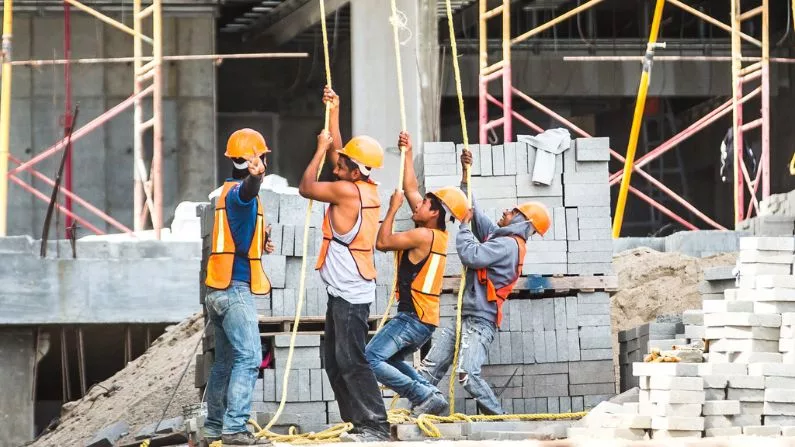Jackson and Teton County officials agree a housing crisis is at hand. How to solve this crisis, though, is up for debate.
The demand for local workers appears to be hitting a wall amid a lack of affordable housing in Jackson Hole. From 2010 to 2021, jobs in Teton County have grown at more than twice the rate of housing, according to the 2022 Teton Range Housing Needs Assessment.
Public funds, philanthropy and zoning are among the resources local policymakers have leveraged to keep Jackson Hole’s workforce housed. Housing mitigation is one other key piece of the pie.
“We know that there are limits to zoning,” Commissioner Mark Newcomb said at a recent joint town and county meeting. “Philanthropy has a capacity, and we just stretched the public capacity to its absolute limit at the SPET level, so, we simply have to ask more of the mitigation rates.”
Based on the idea that development generates new employees, housing mitigation means developers must add housing for those workers. Mitigation rates only cover workers who don’t earn enough to house themselves, or whose households earn between 120-200% Median Family Income.
Revamping local housing mitigation requirements consumed two multi-hour meetings at the county’s chamber earlier this month.
Town and county officials stoked discussions on new housing mitigation requirements — which will likely increase for both residential and commercial properties in light of bubbling inflation. Beyond inflationary controls, exact rates and nitty-gritty adjustments will continue to be tabled for months before anything’s final.
Housing a growing workforce
Housing mitigation, in effect since 1995, has become a critical supply of affordable housing in Teton County. Between 2018 and 2020, 27% of local affordable housing was sourced from mitigation fees.
Still, for years, property owners and employers have wrestled with electeds over keeping rates down.
While recent mitigation meetings were merely some of the first steps toward drafting new requirements, commissioners and councilors aligned in their mission to avoid imposing barriers to small businesses, all while offsetting housing for employees generated by new construction.
Planning Director Paul Anthony, for example, found a “fundamental unfairness” with the requirements’ current toll on small businesses, like how a business can adopt mitigation credits that a previous one “went out-of-business and covered.”
In other words, properties have a certain amount of mitigation credits that occupants must cover either by building affordable housing or paying fees. In some cases, occupants can inherit credits from previous occupants, which Anthony finds unfair. He’d like to cut “change of use” policies.
Councilors and commissioners also expressed interest in streamlining building applications and expanding criteria for who qualifies for workforce housing at the recent meetings.
While mitigation requirements largely increased for over two decades, pressure from pro-development groups like Jackson Hole Working several years ago prompted a substantial slice in mitigation rates.
This time around, the town and county have new data collection methods as a legal defense for their policymaking. The “Employee Generation and Affordable Housing Nexus Study,” prepared by an economic analysis consulting group for the town and county, will provide much of the groundwork for pending new mitigation requirements.
Following the meetings, Vice Mayor Arne Jorgenson told KHOL that while the dollar amount of mitigation rates will increase as a function of inflation, that doesn’t mean the mitigation rate will rise as well.
At this early stage in the process of policy development, he said he’s not sure “where we’re going to end up on the commercial end” for rates. Nonetheless, he does think “that in large residential, you will see a significant increase.”
He noted how mitigation might matter less if the town and county had “tools like a real estate transfer tax,” which the Wyoming House of Representatives rejected in 2022 and in previous years. This tax is a one-time fee that follows the transfer of real property.
“Balance in everything”
Community stakeholders are paying close attention to mitigation requirements — including Rob DesLauriers, a commercial real estate developer at Sotheby’s International Realty.
“It’s not really meant to be just a penalty for people doing development,” DesLauriers said. “It’s meant to also create opportunities through policy for people to actually build.”
While DesLauriers said he’s not exactly sure what the perfect “breakpoint” is for mitigation rates this go-around, he said “this current recommendation is an improvement over the last.”
Blanca Moye, a board member of Shelter JH, a housing advocacy group, agreed with the importance of striking that sweet spot.
“We need more and more housing,” Moye said, “but we want to have balance in everything.”
A draft of the new policy is slated for September and upcoming mitigation meetings will be listed on the town of Jackson’s webpage.





